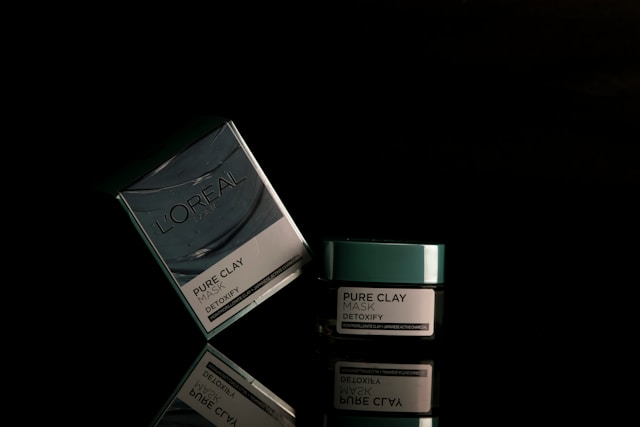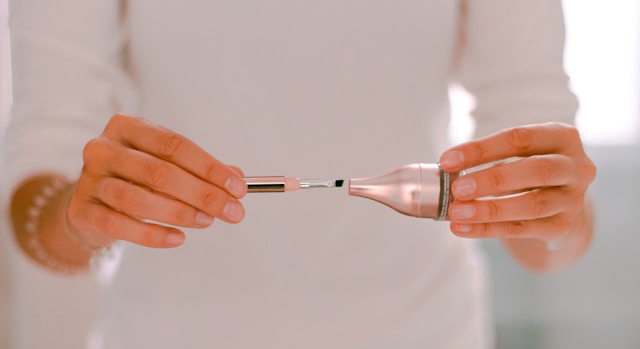When it comes to mastering the art of marketing, few companies can match the prowess of L’Oréal. With over a century of experience, L’Oréal has consistently adapted to changing markets and consumer preferences. This adaptability has made it one of the most successful beauty brands globally. Marketing professionals can glean invaluable insights from L’Oréal’s approach, which blends innovation, digital savviness, and a deep understanding of its diverse consumer base.
Building a Strong Brand Identity
L’Oréal’s marketing strategy begins with a robust brand identity. The company positions itself as a leader in the beauty industry, committed to quality and innovation. Its tagline, “Because You’re Worth It,” has become iconic, resonating deeply with consumers by emphasizing self-worth and empowerment. This message is consistent across all L’Oréal brands, creating a unified identity that consumers recognize and trust.
Leveraging Digital and Social Media
In recent years, L’Oréal has harnessed the power of digital and social media to engage with its audience more effectively. The company has a strong presence on platforms like Instagram, Facebook, and YouTube, where it shares content ranging from product tutorials to influencer collaborations.

For instance, L’Oréal Paris’s “Beauty Squad” campaign in the UK showcased this strategy. By partnering with popular beauty influencers who created content around L’Oréal products, the brand reached millions of followers, generating buzz and driving sales. This approach not only amplified their reach but also lent authenticity, as followers trust the influencers they follow.
Embracing E-commerce and Technology
L’Oréal has made significant investments in e-commerce and technology, recognizing that the future of shopping is online. The company has developed sophisticated digital tools to enhance the online shopping experience. For example, the “Try On” feature allows users to virtually try on makeup using augmented reality. This not only improves customer experience but also reduces the hesitation to buy products online without trying them first.
In addition, L’Oréal’s acquisition of Modiface, an AR and AI company, further strengthened its digital capabilities. Modiface’s technology is integrated across various L’Oréal platforms, providing personalized recommendations and virtual try-ons, making the online shopping experience more interactive and tailored to individual needs.
Personalization and Consumer Insights
Understanding consumer needs and preferences is central to L’Oréal’s strategy. The company uses data analytics to gather insights into consumer behavior, allowing for highly targeted marketing campaigns. By segmenting their audience based on demographics, purchase history, and online behavior, L’Oréal can deliver personalized content and offers.
For example, the company’s use of chatbots on its e-commerce sites helps guide customers through their shopping journey, providing personalized recommendations based on their preferences and previous purchases. This level of personalization not only improves the customer experience but also increases the likelihood of repeat purchases.

Commitment to Sustainability
L’Oréal has also woven sustainability into its marketing strategy, recognizing that today’s consumers are more environmentally conscious. The company launched its “L’Oréal for the Future” initiative, aiming to achieve ambitious sustainability goals by 2030. This includes reducing carbon emissions, improving packaging sustainability, and ensuring that all products are eco-friendly.
Marketing campaigns highlighting these efforts resonate with consumers who prioritize sustainability. By promoting its commitment to the environment, L’Oréal strengthens its brand image and appeals to a growing segment of eco-conscious consumers.
Effective Use of Influencers and Celebrities
L’Oréal’s collaboration with influencers and celebrities is a cornerstone of its marketing strategy. These partnerships help the brand reach wider audiences and add a touch of glamour and credibility. Over the years, L’Oréal has worked with numerous high-profile ambassadors, including actresses like Eva Longoria and Aishwarya Rai.
A prime example is the collaboration with singer Camila Cabello for the launch of her limited-edition makeup collection. The campaign was a huge success, leveraging Cabello’s massive social media following and influence to drive product awareness and sales. These celebrity partnerships not only enhance the brand’s visibility but also create a buzz that traditional advertising often cannot achieve.
Localizing Global Campaigns
While L’Oréal is a global brand, it understands the importance of localizing its marketing efforts to cater to different markets. The company adapts its campaigns to reflect local cultures, preferences, and trends. This approach ensures that the brand remains relevant and relatable to consumers worldwide.
For instance, in India, L’Oréal has tailored its marketing campaigns to feature local celebrities and beauty standards, ensuring that the products resonate with Indian consumers. By embracing cultural nuances and preferences, L’Oréal successfully bridges the gap between global branding and local relevance.
Innovative Product Launches
Innovation is at the heart of L’Oréal’s product development and marketing. The company frequently launches new and innovative products that cater to emerging trends and consumer demands. These launches are often accompanied by extensive marketing campaigns that highlight the unique features and benefits of the new products.
One notable example is the launch of the L’Oréal Revitalift Laser X3, an anti-aging cream that promises results comparable to laser treatments. The campaign emphasized the product’s innovative formula and effectiveness, using testimonials and clinical results to back its claims. This strategy not only educated consumers about the product but also positioned it as a must-have in their skincare regimen.
Engaging Content Marketing
L’Oréal excels in content marketing, producing engaging and informative content that adds value to its audience. The company’s websites and social media channels feature a wealth of beauty tips, tutorials, and expert advice, helping consumers make informed decisions about their beauty routines.
The “L’Oréal Paris Makeup Designer” app is a perfect example of this approach. The app provides users with personalized makeup tutorials, product recommendations, and the ability to virtually try on different looks. By offering such valuable content, L’Oréal fosters a deeper connection with its audience, encouraging brand loyalty and repeat purchases.
Strategic Partnerships and Sponsorships
Strategic partnerships and sponsorships are another key component of L’Oréal’s marketing strategy. The company collaborates with various organizations and events to enhance its brand visibility and reach new audiences.
L’Oréal’s long-standing partnership with the Cannes Film Festival is a testament to this strategy. As the official beauty partner of the festival, L’Oréal enjoys immense exposure, associating its brand with glamour and high fashion. This partnership not only elevates L’Oréal’s brand image but also provides a platform to showcase its latest products to a global audience.
Consistency in Branding
Maintaining consistency in branding across all touchpoints is crucial for L’Oréal. Whether it’s through advertising, social media, or in-store displays, the brand ensures that its messaging, visuals, and tone remain cohesive. This consistency builds trust and recognition, making it easier for consumers to identify and connect with the brand.
Fostering Customer Loyalty
L’Oréal understands the importance of customer loyalty and employs various strategies to nurture it. Loyalty programs, personalized offers, and exclusive content are some of the ways L’Oréal keeps its customers engaged and coming back for more.
The L’Oréal Paris “Worth It Rewards” program is a prime example. Members earn points for purchases and engagement, which can be redeemed for products and experiences. This program not only rewards loyal customers but also encourages ongoing engagement with the brand.
Five Lessons Marketers Can Learn from L’Oréal
L’Oréal’s marketing strategy is a masterclass in brand building, digital innovation, and consumer engagement. By focusing on a strong brand identity, leveraging digital and social media, embracing e-commerce, and committing to sustainability, L’Oréal has cemented its position as a leader in the beauty industry. Marketing professionals can draw inspiration from L’Oréal’s multifaceted approach, which seamlessly blends traditional marketing principles with modern digital strategies. Whether it’s through influencer collaborations, personalized experiences, or innovative product launches, L’Oréal continues to set the benchmark for marketing excellence in the beauty industry.
L’Oréal’s marketing success provides valuable insights for marketers aiming to enhance their own strategies. Here are five key lessons that can be gleaned from L’Oréal’s approach:
1. Embrace Digital Transformation
L’Oréal has shown that embracing digital tools and platforms is essential in today’s market. The company’s investment in augmented reality (AR) and artificial intelligence (AI) technologies, like the “Try On” feature and the acquisition of Modiface, exemplifies how digital innovation can enhance customer experience and drive online sales. Marketers should prioritize integrating digital solutions that offer convenience and personalization to consumers, making the online shopping experience engaging and user-friendly.
2. Leverage Influencer and Celebrity Partnerships
Influencers and celebrities can amplify a brand’s reach and credibility. L’Oréal’s collaborations with high-profile figures, such as the “Beauty Squad” campaign and partnerships with celebrities like Camila Cabello, demonstrate the power of leveraging influential personalities. These partnerships can create buzz, drive engagement, and build trust with target audiences. Marketers should carefully select influencers whose values align with their brand and whose followers match their target demographics to maximize impact.
3. Commit to Sustainability and Social Responsibility
L’Oréal’s “L’Oréal for the Future” initiative highlights the importance of sustainability in modern marketing. Consumers today are increasingly conscious of environmental issues and prefer brands that demonstrate a commitment to sustainability. L’Oréal’s efforts to reduce carbon emissions, improve packaging, and promote eco-friendly products resonate with this consumer sentiment. Marketers should incorporate sustainability into their brand values and communicate their efforts transparently to appeal to eco-conscious consumers.
4. Personalize the Customer Experience
Understanding and catering to individual consumer preferences is crucial for building loyalty. L’Oréal’s use of data analytics and AI to offer personalized product recommendations and targeted marketing campaigns showcases the effectiveness of this approach. By utilizing customer data, marketers can segment their audience and deliver tailored content and offers that meet specific needs and preferences, enhancing customer satisfaction and retention.
5. Maintain Consistency in Branding
Consistency in branding across all touchpoints ensures that consumers have a cohesive and recognizable brand experience. L’Oréal maintains a unified brand identity through consistent messaging, visuals, and tone across advertising, social media, and in-store displays. This consistency builds trust and makes it easier for consumers to connect with the brand. Marketers should ensure that all brand communications are aligned and reinforce the core brand message to create a strong, recognizable presence.

